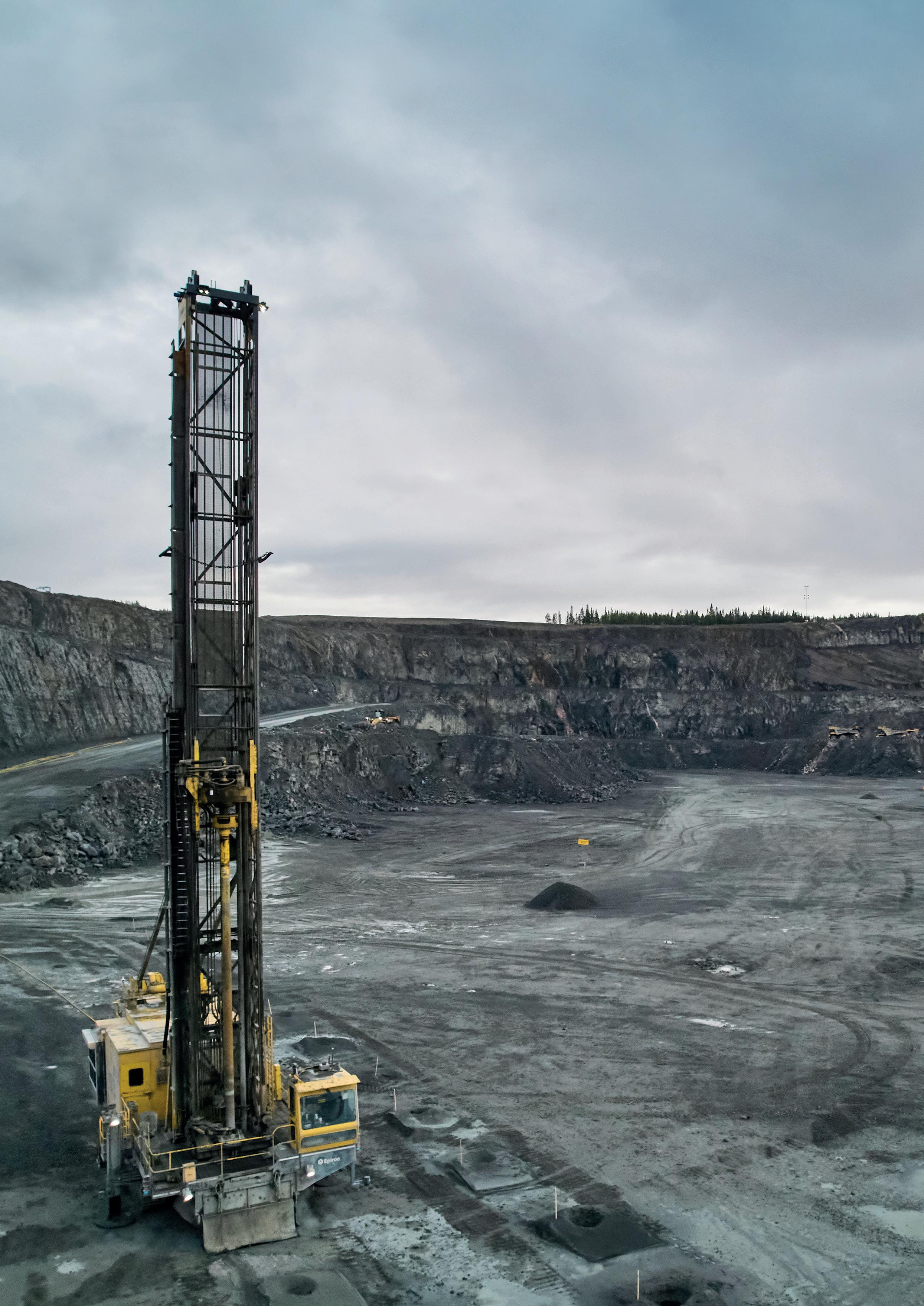
5 minute read
An Autonomous And Remote Revolution

Greg Johnson, Schneider Electric, Australia, details the implementation of automation and remote working in the mining industry, and how it has accelerated since the outbreak of the COVID-19 pandemic.
In an industry as fast paced and cyclical as mining, where efficiency and productivity are critical to profitability, improvements in technology and employee experience are crucial to yielding results. While automation and remote mining are not brand-new ideas, the direct impact felt by the mining industry since the COVID-19 pandemic began has accelerated the need for operations to adapt to the new way of working. With the help of new technology, this can become a reality.
COVID-19 has accelerated the widespread implementation of remote and autonomous operations, with various mining companies relocating around 15 – 20% of their on-site workforce.1 Both large and small mining companies are using it to their advantage to make improvements to their businesses, to sustain operations, maximise profits, reduce costs, and improve the wellbeing and productivity of their employees. With the combination of advancing technology and the impact of the COVID-19 pandemic, the mining sector has had time to stop and think about how they can change their operations for the better.
Technology transforming mining
The explosion of the Internet of Things, 4G, and 5G have revolutionised the mining industry. Thanks to new technologies, mining equipment can be monitored and maintained before breakdowns occur. Not only this,
but sensors are able to monitor the speed and temperature of machines, ensuring predictive maintenance takes precedence. Ultimately, by assessing real-time data and ensuring new technologies are working correctly, mining operations can now be safer and more productive for all involved. With the increase of onsite sensors and automation, combined with networks and data collection, the possibility of moving more people offsite and into a remote operating centre is now achievable.
A notable example is Black Rock, which has adopted an integrated operating centre, ultimately enabling enhanced decision-making and affording operators the opportunity to address challenges proactively rather than reactively, as had been done in the past.2 With remote integrated operating centres, organisations are able to monitor and control all equipment used in multiple mines, mills and power plants, with oversight across all the important areas of the organisation. Over time, this will reduce overall maintenance, as problems will be recognised early before they cause serious damage, as well as optimising process performance and providing a detailed overview of plants, guaranteeing optimum visibility across all sites.
This idea is being adopted by more companies that are looking to ensure employees can communicate better with each other, while also allowing them to coordinate between maintenance and production. Although not a new concept, integrated and remote operating centres present an opportunity for mining companies to reimagine and reform the ways they operate, as remote working becomes vital to ensuring value and efficiency.
Making the case for remote operation
However, due to the pandemic and the surge in mobility and technology, the sector has realised that this is not the only change that is needed. Staffing and supporting remote, fly-in-fly-out mines can be expensive and a logistical nightmare. In sites where a high percentage of activity comes from non-mining activity, for example camps and flights, etc., there is a strong case to automate or remotely operate front-line equipment and solely keep small satellite offices on site.
When it comes to capitalising on the latest technologies, the mining industry has traditionally lagged behind other sectors. However, due to the uncertainty of the pandemic, mining companies are now taking a leap to collect, store, and utilise data and technologies to drive forward automated and remote mining operations. Mining companies are now adopting new technologies with the required business and technical abilities to decrease costs and boost productivity and safety.
Embracing the new normal with remote integrated operations management is essential to not only improving safety, but also decreasing costs. Miners that do not change the way they are operating now, run the risk of lagging behind, and failing to meet the demands of a highly volatile commodities market. Some are layering this with improved remote operations, production or maintenance functions, and go as far as remote and decentralised multi-discipline engineering though modern 3D and 4D tools. Remote operations can play an integral role by providing a holistic and integrated approach, using vital information, and remotely supporting mining operations using up to date technologies.
The ability to digitise operations will improve the miners’ ability to attract and retain new diverse talent, increasingly discouraged by hectic shifts and the need to be physically present on remote sites. The onset of automation and remote operations enables better working conditions for staff, allowing them to move to more predictable schedules and better living conditions in nearby or even large cities and towns.
The importance of agility
Digitalisation goes beyond adopting technology. It needs to be solving a business issue and is key to resolving the sector’s number one operational challenge: improving productivity across the value chain. Companies need to be pragmatic when targeting digital enhancements, in order to ensure success in the competitive market.
Companies large and small that are not agile enough to vary their operations based on short-term market demands, and the ever-changing global demand for commodities, will run the risk of not being competitive in a volatile market. Several global crises over the past years, have clearly demonstrated that agile organisations out-perform their competitors in difficult periods. Having a holistic view of the entire operation or enterprise will enable informed decision making to best meet market requirements.
Surviving the post-COVID era
Evaluating autonomous and remote operations in cyclical industries, such as mining, is essential to survive in the new post-COVID era. Understanding employee needs and combining this information with the efficiency and profitability of a site will be crucial to achieving long term success.
Introducing successful new ways of working will not happen overnight. However, the benefits of autonomous mining are proving to be a step in the right direction. There is no doubt that autonomous mining and remote operations will be an inevitable and integral part of the mining industry in the future.
References
1. GALLARDO, R., GODDARD, D., GÖRNER, S., and
RUBINSTEIN, B., ‘Remote operating centers in mining: Unlocking their full potential’, McKinsey & Company, (29 October 2020), www.mckinsey.com/industries/metals-and-mining/our-insights/ remote-operating-centers-in-mining-unlocking-their-full-potential 2. ‘Black Rock Mine Operations (BRMO)’, AVEVA, www.aveva.com/en/perspectives/success-stories/brmo/










